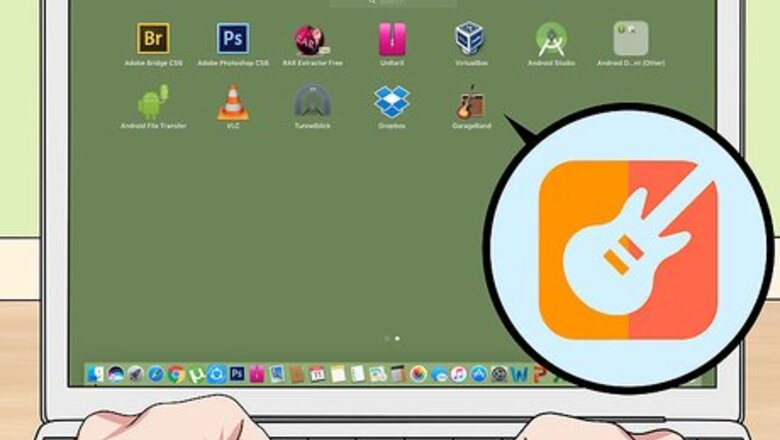
views
Choosing a Program
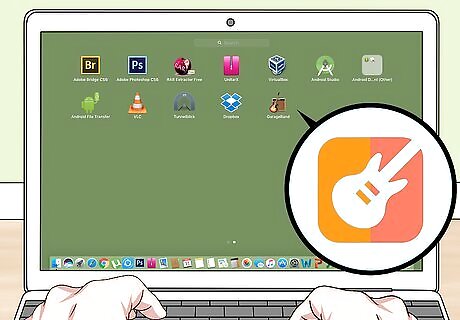
Use a digital audio workstation (DAW) if you're new to music programs. Also known as modern composition software, DAWs let you make your own music by playing around with different notes, instruments, and effects (Garage Band is a popular example). This kind of software can still be a little challenging to use if you're a beginner, but it's usually more intuitive than other music programs or apps, making it a good place to start. To use a DAW to make chiptunes, search “digital audio workstations” or “modern composition software” online and install one of the programs you find on your computer. There are plenty of free DAWs available online that you can try when you're first starting out. Some programs you might want to check out are Ableton Live, FL Studio, and Sonar.
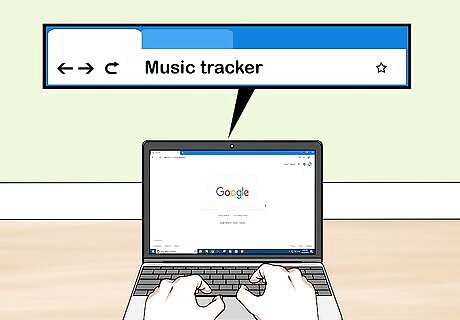
Try using a music tracker if you want more control over the music. Music trackers are used by a lot of serious chiptune artists, but they can be harder to navigate than DAWs because of their complicated interfaces. Like DAWs, you'll be able to lay down different notes and sounds to make your music, but with a tracker, everything will be presented as a scrolling list of letters and numbers, which can get confusing. However, you'll be able to do more with your songs and have more control over the final product, so it might be worth it if you plan on making a lot of chiptunes. You can find free or paid music trackers online by searching “music trackers” or “chiptune music tracker.” Some free music trackers you might want to try include OpenMPT, MilkyTracker, SunVox, and SonantLive.
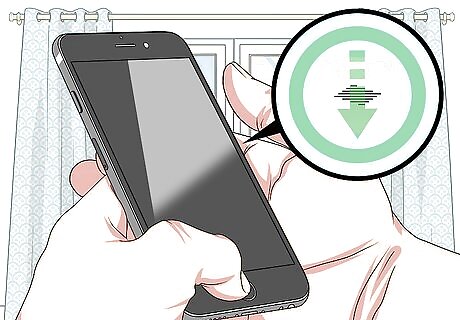
Download a chiptune app on your phone to make music on the go. Like music trackers, chiptune apps can be complex if you don't know what you're doing, and you may be more limited in what you can do with them. Still, an app might be a good choice if you want the convenience of making chiptunes when you're away from home. Try searching “Chiptune maker” or “Chiptune app” in your app store to find an app that you can use. Nanoloop and Sunvox are both chiptune apps available for iPhone and Android users. If you're having trouble figuring out how to use an app, search online or check out YouTube to see if there's a tutorial.
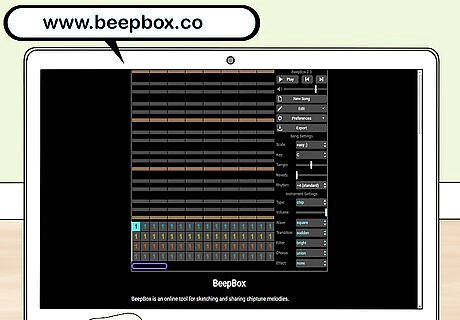
Try an online chiptune maker if you'd prefer something simple and easy. Online chiptune makers can be used right in your browser, and they usually have more user-friendly interfaces than DAWs and music trackers. An online chiptune maker might be a good choice if you want to practice making chiptunes without learning a lot of complicated controls and settings. However, you'll be more limited in what you can do, so eventually you might want to move on to other programs. BeepBox and Chirp are both online chiptune makers you can check out if you're interested.
Getting Chiptune Sounds
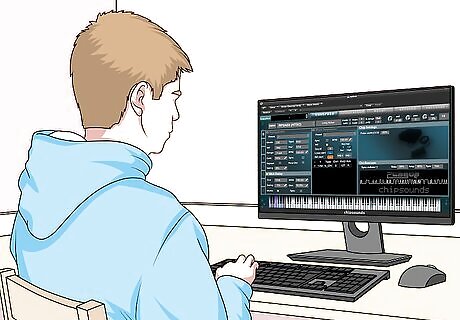
Use a virtual studio technology (VST) plug-in to easily get chiptune sounds. Chiptunes are made using sounds that originally came from the sound chips in computer and video game consoles, and you'll need to add those sounds to your program in order to make a chiptune. While there are several ways you can get chiptune sounds, one of the easiest is downloading a VST chiptune plug-in, which will add the sounds you need to your music program so you can start using them to make music. To find free or paid VST chiptune plug-ins, just search “VST chiptune plug-in” online and download one on your computer. Then, follow the instructions for the plug-in to add it to your music program. Some VST chiptune plug-ins you can try are Chipsounds, NESPulse, and Tweakbench Peach. If you're using a chiptune app on a mobile device or an online chiptune maker, you won't need to download a VST plug-in since the sounds you need should already be available to you.
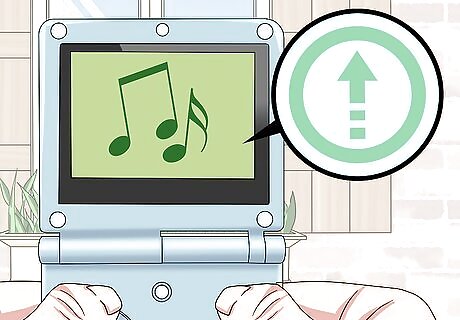
Upload sounds from consoles if you want to make authentic chiptunes. In the past, chiptune sounds came directly from their original hardware, like Gameboys and Ataris, but nowadays most of those sounds are available online. However, you can still produce and upload sounds directly from old computer and video game consoles if you have the right equipment. The process will vary depending on the console you're using, but you'll likely need some kind of hardware that plugs into the device, which will let you play sounds on it and then upload them to a computer. If you're interested in using sounds from an old console, you can find a tutorial and the list of hardware you'll need online by searching something like “How to make chiptune sounds on a Gameboy.” You can find old consoles online through websites like eBay and Craigslist.

Try replicating old console sounds yourself if you're up for a challenge. The sound chips used in old computer and gaming consoles were unique to each console, which is why each kind of console produced different sounds. By recreating the unique conditions and limitations of a sound chip in a music program, you can replicate the sounds that sound chip produced. If you want to make chip sounds without a VST plug-in or an actual console, look up the specifications for a console you want to replicate and recreate those settings in your music program. Then, when you lay down notes, they'll sound like the notes produced by the console. For example, if you wanted to replicate the sounds a Nintendo Entertainment System (NES) makes, you could look up the specifications for the sound chip used in that model. The specifications would include how many channels the chip had (the NES had 5), what the different channels were, and what the frequency range of each channel was. By matching those conditions in your music program, you could recreate NES sounds.
Making a Song

Listen to other chiptunes to get an idea of what they're like. Pay attention to the melodies used, and note what you like and don't like so you have a starting point when you go to make your own chiptunes. Also, try listening to chiptunes made with sounds from different consoles to get an idea of what console sounds you like best. Then, you can use the sounds from those consoles to make your music. You can find chiptune playlists on streaming platforms like Spotify, or you can look up songs on YouTube.

Come up with a melody for your chiptune. A melody is the tune, or foundation, of a song. It should be the most memorable part of your chiptune that you'll hum or sing along with. Once you've thought of a melody, you can write it down or record yourself singing or playing it on an instrument so you can reference it later.

Lay down the notes in your melody using your music program. Once you have a program and some chiptune sounds, you can start creating your chiptune. The process will vary depending on the kind of program you're using and the program itself. If you're replicating sounds without a VST plug-in or old console, first you'll need to make adjustments in the program you're using so it matches the specifications of the sound chip you're replicating. If you are using sounds from a VST plug-in or console, you can just add different notes to your track using the sounds you added to the program. Making chiptunes can be a little complicated at first, so you might want to stick with something simple until you get the hang of it. Don't worry if you're having trouble at first. Learning how to make chiptunes takes some trial and error! If you need help using your music program, look up a tutorial online.
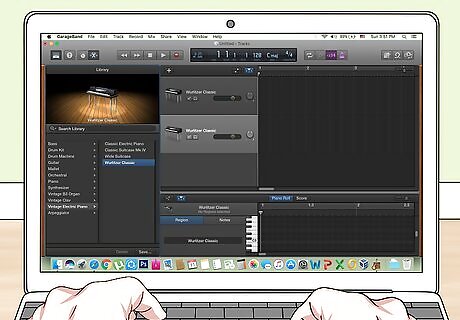
Experiment with different layers to make your chiptune more interesting. While you can just have your chiptune be the melody you came up with, it might sound a little flat and boring. Once you've added the melody, try building on it by adding things like bass sounds, drums, synths, and solo parts. Play your chiptune back every once in a while to see how it sounds. If you don't like it, you can always delete certain sounds and try something else. Don't feel like you have to make your chiptunes super complex at first. Even just adding a few different layers to your track can be effective.
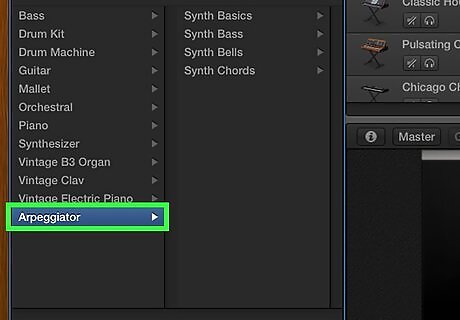
Play around with any effects available in your music program. Depending on the program you're using, there may be fun effects you can use to make your chiptune more dynamic. Effects can usually be applied to individual notes or entire portions of a song, so there are limitless ways you can use them to make your chiptune. Some common effects you might run into are: Arpeggio: Allows you to make a chord using just one channel instead of several channels. Vibrato: Creates variation in pitch. Tremolo: Lets you vary the volume of a note as it's being played.
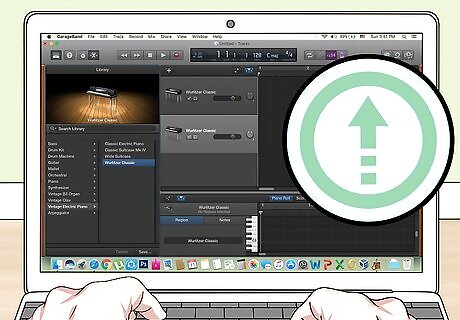
Save and upload your chiptune to share it with others. The right way to save your song will depend on the program you're using. If you're using a DAW or music tracker, you should be able to save and edit your chiptune at any time. Then, after you save your chiptune, you can upload the file to places like Soundcloud, Spotify, and YouTube so other people can listen to your work! If you're not sure how to save a song file using your music program, try looking for a tutorial online.


















Comments
0 comment